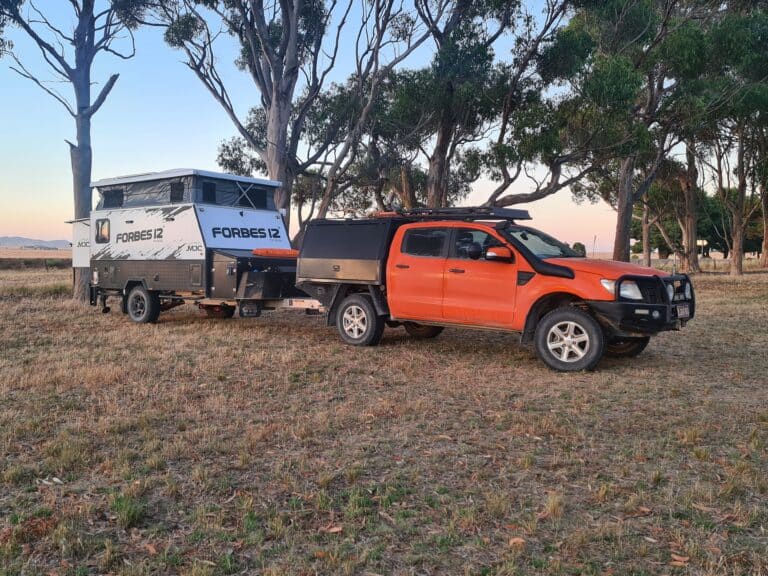The ultimate guide to towing : Introduction




Towing is not a skill anyone is born with, despite what you might hear around the traps at the park happy hour, and it’s not easy to figure it out unaided. Welcome to the RV Daily Ultimate Towing Guide!
Over the next several months, we’ll be looking at towing from the very beginning all the way to the advanced techniques. We’re going to focus on what caravan and camper trailer towers need to know from a practical perspective, and assume you’re capable car drivers but have never hitched a trailer before and have no prior knowledge. However, we’re also quite sure that even the experienced will learn something along the way, even if that’s the reason why they do what they do. This series will cover all you need to know about towing, but not caravan operations such as electrics, toilets, heating and cooling.
To begin with, let’s look at the topics we’ll cover – which is open to reader feedback – and make a few bullet points about each so you get an idea of why it’s important and the key things to know.
You can’t operate what you can’t describe, so in this towing guide, we’ll talk about drawbars, hitches, towbars, balls, tongues, suspension, breakaway controllers, safety chains, jockey wheels, electrics, placards, Anderson plugs, towing mirrors and any other jargon we can think of. Some of these items have more than one name, so we’ll cover that too. This is first up, so the terms are defined, and then you can look back if we use a term you don’t remember.

Ah, the complicated but unfortunately necessary world of towing weights. We’ll go over what everything means from GCM to ATM to TBM, explain the complex inter-relationships, and bust a few myths such as “you can always tow 750kg unbraked” and, “oh, but you double-counted TBM”. Then, we’ll show you where to find your limits and how to get weighed.
This will focus solely on legality and towability, not whether you might prefer an east-west bed to north-south or the merits of an en-suite. So in this towing guide, we’ll talk here of weights, towability, matching your tow car to the trailer, single vs tandem axle, dimensions and capability over different terrains. For tow cars it’ll be petrol vs diesel and even electric, utes vs wagons, AWD vs 2WD, what features you need and maybe don’t. We’ve seen many people buy vans they can’t tow and we don’t want to see any more.

Pretty much every vehicle could do with modifications to turn it into the ultimate tow car, some of which are mandated by law, others are highly recommended and some are just nice to have. Our towing guide will discuss braking systems, suspension, towing mirrors, long-range tanks, tyres, storage and more, and as ever, explain why you may need it depending on your needs. No “buy everything” here!

You need to take things when you travel. Now, we’re not going to tell you what things you need because that’s a very personal decision, but we will offer some advice as to where those things might be located and why, all in the name of stability and ease of access. It’s tricky with a caravan, but this towing guide will discuss some techniques to consider.
Finally, it’s time to connect you tow car to the trailer! But how do you do that, and ideally, without breaking your relationship or anything else? And then…moving off! What’s it like to tow? What should you do, not do? Where can you learn? What should you practice?
Ah yes, what accelerates must slow down, and as you’d expect by now, trailers complicate everything. Here, we’ll look at the different types of brakes and how you, and your passenger, should operate them. Overruns, electric, manual control, automatic, discs and drums, and, of course, the laws. This is a big enough topic to warrant its own article in the towing guide!

You only ever want to read about this or maybe watch a video. So we’ll explain what sway is, what causes it, how to prevent it, and what to do when it happens, busting a myth or two along the way.
The black art. The magic. The skill. Let’s not lie, it’s difficult, but not as difficult as you may be thinking. We’ll cover the basics and the more advanced in this towing guide, including reversing into a tight spot, the ultimate test!

This is your general towing: fatigue, rural roads, freeways, the eating-up-the-miles part of travel. Oh, and convoys too. Here, we look at speeds, the effect on fuel consumption, stability, varying the setup as you travel, a little on fatigue, tyre pressures and more.
This won’t be full-on offroad – we might do that another time – but sooner or later, you’ll need to negotiate a terrain other than smooth-level bitumen. Maybe a wet grassy campsite, a dirt road, or a sandy access track, so it’s kind of your inadvertent semi-offroading towing guide.

We’ll cover safety all along the way, but it’s not a bad idea to put all the tips in one place and give them some sort of overall order and cohesion, and there will a few new points to consider. This will include safety of yourselves and other people; everything from hitching up to sway to what happens if you’re stranded. Don’t forget our pieces on Remote Area Emergency Communications, Part 1 and Part 2.

Finally, we’ll end with how to save fuel and back up the advice with some real, actual numbers!
Along the way, we’ll take reader feedback and, when themes of questions develop, answer them in specialist articles. So, what are you most interested in? Any questions to begin with?
